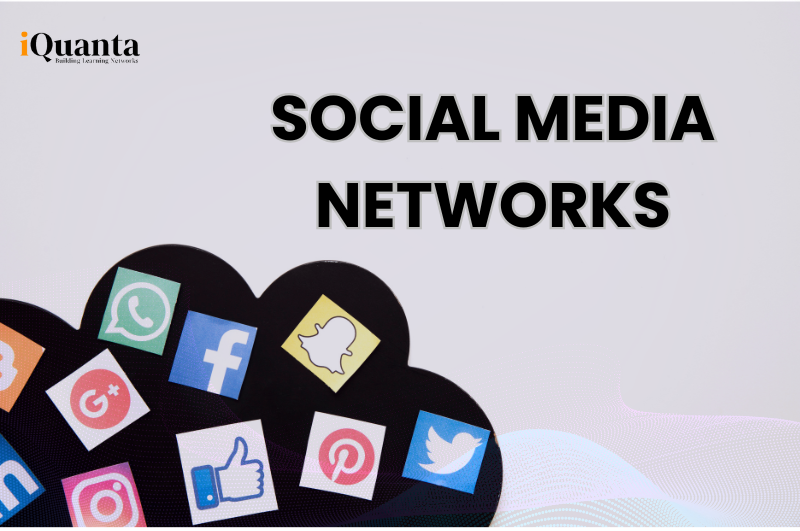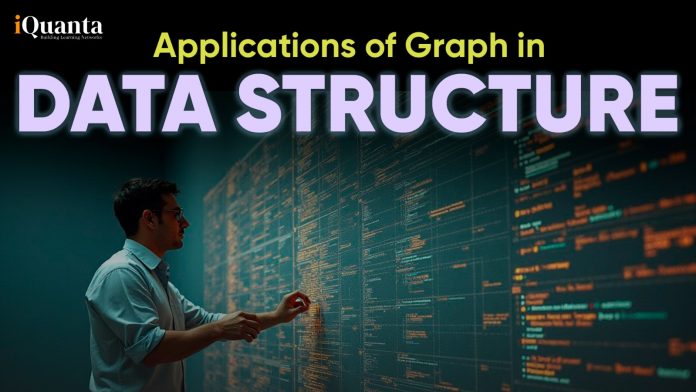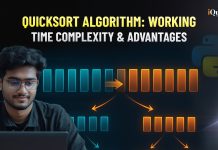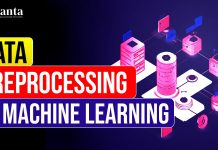The application of graph in data structure is widely seen in real-world scenarios where relationships between nodes or entities need to be represented. A graph data structure consists of nodes (vertices) connected by the edges, which forms a network of connections. Graph data structure plays an important role in social networks( like facebook, Linkedin, Twitter ), recommendation engines, navigation systems, cybersecurity as well as artificial intelligence.
In this blog we will be covering the top 7 application of graph in data structure and understand their importance in various fields.
What are application of graph in data structure ?
The application of graph in data structure can be seen in many real-life situations where things are connected. Imagine a graph as a map where places (cities, houses, or people) are dots, and the roads or connections between them are lines. For example, in social media, the application of graph in data structure helps show friendships—each person is a dot, and if two people are friends, there is a line between them. Similarly, in Google Maps, locations are dots, and roads between them are lines, helping find the shortest route from one place to another.
Another application of graph in data structure is in websites like Google, where each webpage is a dot, and links between pages are lines. This helps search engines rank pages based on how many other pages link to them. In computer networks, graphs help manage how data moves between different devices. Even in real life, like in airline routes, the application of graph in data structure helps show which flights connect different cities. So, graphs are useful whenever things are linked, making them important in many fields.
7 Application of Graph in Data Structure
Social Networks (Facebook, Linkedin, Twitter)
One major application of graph in data structure is in social media networks like Facebook, Linkedin etc. In these examples graphs are used to represent connections between the users.
There are different terminologies that we are following while reading graph:
- Users are nodes, and friendships or follows are edges
- Different graph algorithms help suggest new connections and identify influential users.
- Graph traversals like Breadth-First Search (BFS) are used to explore relationships.

Google Maps & GPS Navigation
Another application of graph in data structure is Google Maps and GPS navigation systems. Graphs help in following situations :
Dijkstra’s Algorithm and A* Search Algorithm are powerful tools for finding the shortest path in a graph, where locations are modeled as nodes and roads as edges with weighted distances. Dijkstra’s Algorithm guarantees an optimal solution by exploring all possible paths, while A* Search Algorithm enhances efficiency by using a heuristic to prioritize routes. These algorithms are widely used in navigation systems, robotics, and logistics to optimize travel time and resource management.
However, real-world road networks are dynamic, constantly changing due to traffic conditions. To address this, real-time traffic updates modify edge weights, ensuring accurate path calculations. Navigation apps rely on these algorithms to reroute users based on live data. Dijkstra’s Algorithm recalculates paths when traffic conditions shift, while A* Search Algorithm quickly adapts by combining real-time updates with heuristic estimates. By integrating traffic data with these algorithms, transportation systems become more efficient, reducing congestion and improving urban mobility.
Recommendation Systems (Netflix, Amazon, YouTube, Spotify)
Recommendation engines use graph-based algorithms to suggest content by analyzing relationships between users and products. In this system, users and products are treated as nodes, while interactions like views, purchases, and likes act as connections (edges) between them. One common approach, collaborative filtering, finds users with similar interests and suggests items they might like based on shared preferences.
Another approach uses Knowledge Graphs, which help connect related content in search engines by linking similar topics, products, or media. Big platforms like Netflix, Amazon, and YouTube rely on these graph-based methods to recommend movies, products, and videos. This makes it easier for users to discover new content that matches their interests, improving their overall experience.
Web Page Ranking(Google Search Algorithm)
Google’s PageRank Algorithm works like a voting system for web pages. Each web page is a point (node), and links between them act as connections (edges). A page becomes more important if many other pages link to it, just like a popular person is well-known because many people talk about them. This helps Google rank websites, so when you search for something, the most relevant and trusted pages appear at the top of the results.
Computer Networks and CyberSecurity
Graph-based models play a crucial role in computer networks and cybersecurity by helping analyze and optimize data flow. In these models, routers, switches, and computers are treated as points (nodes), while network connections act as links (edges). Graph algorithms are used to find the best paths for data packets, ensuring efficient communication. They also help in intrusion detection by identifying unusual patterns in network traffic. Cybersecurity experts use these techniques to detect threats in real time, making networks more secure against cyberattacks.
Database System and Query Optimization
Databases use graph-based methods to store and organize data more efficiently. Graph databases like Neo4j, Amazon Neptune help manage complex relationships between data, making it easier to find connections. In SQL databases, special graphs help choose the best way to get data quickly. Knowledge Graphs improve searches by linking related information, making results more accurate. These techniques make databases faster and better at finding the right data when needed.
Computer Science & AI (Graph Neural Networks)
AI and Machine Learning use graphs to connect and understand data. GNNs help in drug discovery, fraud detection, and social media analysis. Graphs also improve language processing and power recommendations, like Pinterest’s PinSAGE. These methods make AI smarter and more efficient.
Conclusion
Graphs play a vital role in AI, databases, networks, and cybersecurity by efficiently managing relationships and optimizing processes. Their applications make technology smarter, faster, and more accurate in solving real-world problems.


![Top 10 Applications of Linked List Data Structure [2025]](https://www.iquanta.in/blog/wp-content/uploads/2025/02/WhatsApp-Image-2025-02-01-at-2.48.42-PM-218x150.jpeg)

